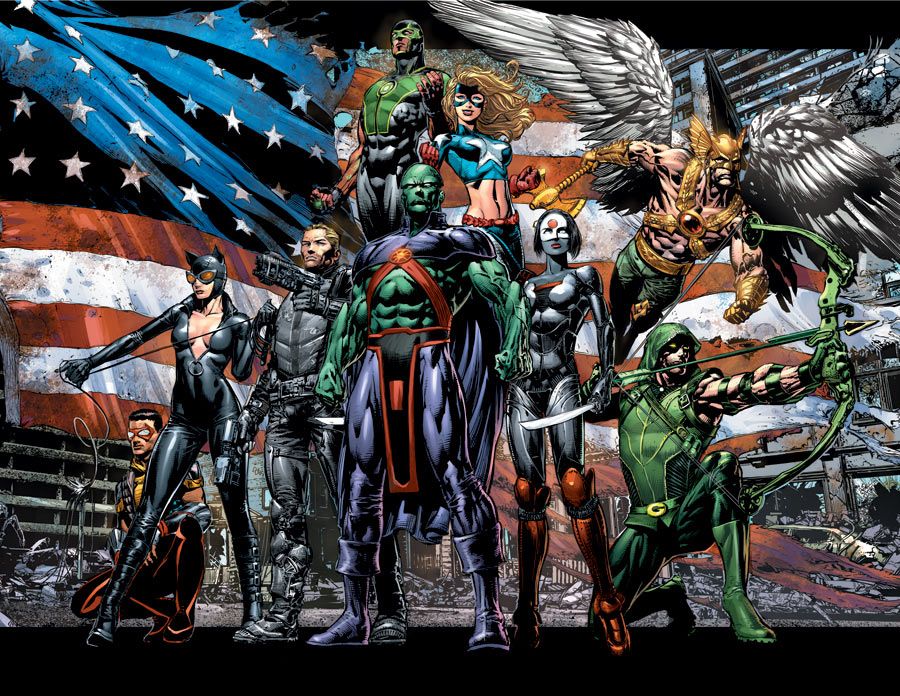Flipping through "Justice League of America" #2 shortly after getting home with my stack of comics yesterday, "Oh, wow!" was forced from my gut as I happened across the painstaking texture Scott Clark drew into Martian Manhunter's skin and cloak. Deftly enhanced by inker David Beatty in the Matt Kindt-written Manhunter backup story, the art has the appearance of being photo-referenced, but so much attention is placed in the details and textures that the base reference is lost to the art on the page. Kindt's first-person narrative establishes a strong foundation for this character and his ongoing adventures at the back of this book. Maybe I'm getting a little ahead of myself here, but like "Justice League" until the recent migration of Reis/Prado/Reis to that title, the backup tale is the star of the book.
While the overall journey taken through "Justice League of America" #2 might not be top of mind when I get around to reading the third issue, one scene will remain in my brain and more than makes up for a particular character's treatment since the launch of the New 52 in just five panels. The character is Hawkman and I'm just thankful someone who gets the character and is able to make him intimidating and entertaining is finally writing him. The interplay between Hawkman, arguably the most volatile member of this new League, and Vibe, easily the most timid of the team, is comical and defining for both characters, this team and this title.
That's not to say that Geoff Johns hasn't written a solid story here: it's decent and informative. It's just not exceptionally memorable. As the first issue opened with a mysterious character being pursued by other mysterious characters in a mysterious setting, "Justice League of America" #2 opens in a mysterious setting, with a character readers all recognize (Scarecrow) entrenched in conversation with another mysterious figure. Johns seems perfectly content to seed this book with teases for now, but in between he provides some slivers of characterization for members of the team. Vibe and Stargirl exchange pleasantries, Katana has no such interest and Catwoman is trying to defy the laws of anatomy and textiles by walking around with her suit unzipped to her navel. In the panels where the team is together, they do a lot of standing and talking, mostly at dramatic angles that play to shadowy forms being cast all over them.
David Finch seems equally interested in making the lead story appear as detailed as Clark's work in the backup, but like so many of the relaunched costume redesigns, a great deal of Finch's detail is fussy. The artist adds knickknacks and knobs to things, favoring the drama delivered via shadow over texture. Sonia Oback's coloring is murky and dark, enhancing the mystery Johns writes into "Justice League of America." Finch makes some odd page and panel choices, including several panels throughout the issue that appear shoehorned in or pasted overtop previously dead space. Some of those panels are barely the size of a small Post-It Note, which just seems odd for the scope of this story.
Among the mysteries and teases are some connections to "Justice League." A Secret Society discussed in conversation between Amanda Waller and Steve Trevor is inferred to have connections to characters that have appeared in Johns' "Justice League." That setup, combined with the purpose of the team's formation and Johns' current assignment writing both "Justice League" titles, all but assures a team-up or conflict somewhere down the road. In the meantime, "Justice League of America" is still trying to establish its voice, which it should be able to do now that everyone has been introduced.

